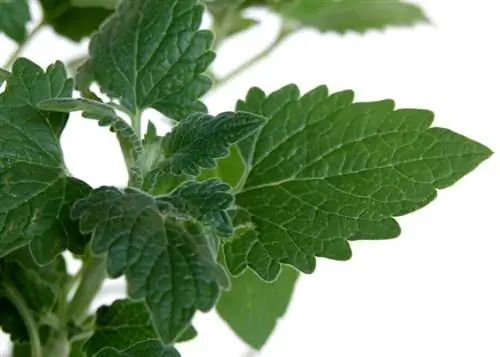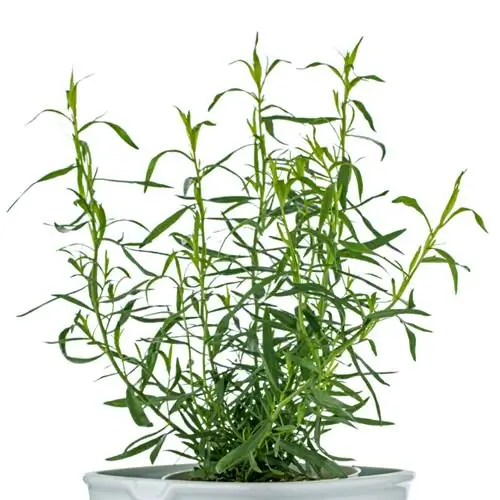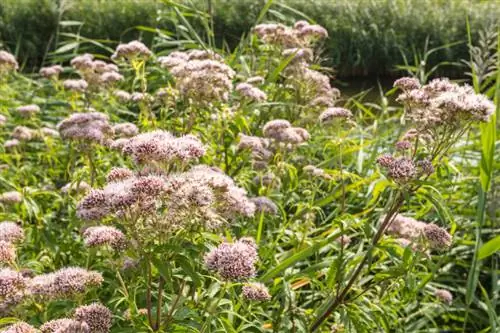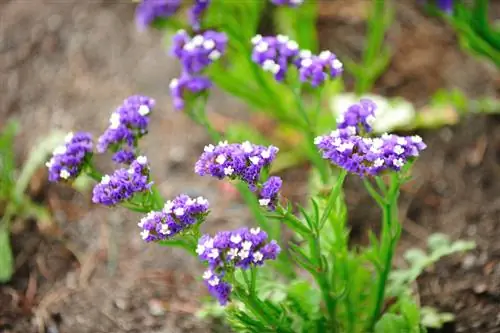- Author admin [email protected].
- Public 2023-12-16 16:46.
- Last modified 2025-01-23 11:20.
The sea lavender (Limonium) is also colloquially known as sea lavender because in nature it often grows wild in coastal locations and defies strong winds and barren living conditions. Since it copes better with drought than with waterlogging, it can be planted in dry locations in full sun in the garden.

How do I care for the sea lavender in the garden?
The care of sea lavender (sea lavender) includes: sparing watering of older plants, spring and autumn pruning, winter hardiness down to -30°C, occasional fertilization and avoiding waterlogging. Root cuttings can be used for propagation.
How often should the sea lavender be watered?
Over time, the sea lavender develops very deep taproots so that it can get the moisture it needs from deeper layers of the earth in dry phases. Older specimens therefore only require additional irrigation in rare exceptional cases of extreme drought. On the other hand, young plants and sea lavender in pots should be watered regularly every few days in hot and dry conditions.
When can limonium be transplanted?
The specimens of the Limonium genus, which includes over 300 species and are sold in garden shops, are ideally planted out in the garden in spring. Young plants grown from seeds or root cuttings should (if necessary) not be planted out too late in autumn so that they are sufficiently hardy without winter protection.
When and how should the sea lavender be cut?
The sea lavender is cut back completely to ground level in autumn so that it can sprout freely in spring. Since the inflorescences fade only slightly after being cut and dried, these are often cut off in the summer and dried for use in dried bouquets.
Is sea lavender threatened by diseases or pests?
Sea lavender is generally extremely resistant to diseases and pests. However, deficiency symptoms can result from root rot if the sea lavender's roots are exposed to persistent waterlogging. Prevent this danger in wet locations with heavy soil by adding a drainage layer in the planting hole. Plant pots with sea lavender should have appropriate drainage holes on the bottom.
When and with what should sea lavender be fertilized?
Sea lavender requires very few nutrients and can therefore cope well with poor soil. In spring, if necessary, you can replenish nutrients with some compost or complete fertilizer (€47.00 on Amazon). However, no fertilization should be carried out in autumn so that the plants can transition from the growth phase to hibernation in good time.
How can sea lavender be overwintered easily?
Unless your sea lavender is a freshly grown seedlings, it is hardy in the outdoor bed down to around minus 30 degrees Celsius without any problems. However, winter protection may be appropriate in the following cases:
- Cold frosts (water if necessary on frost-free days)
- Beach lilac in a pot (wrap with fleece or bubble wrap)
- late sown seedlings
On wet slopes, a winter cover with a layer of leaves can help drain excess rainwater better.
Tip
The sea lavender can be propagated relatively easily using root cuttings. To do this, simply cut off pieces of roots about 5 centimeters long from an older specimen (after carefully digging it out) and place them in a plant pot with loose, lean substrate.






